Chlorophyta
A great range of somatic differentiation occurs within the Chlorophyta, ranging from flagellates to
complex multicellular thalli differentiated into macroscopic organs. The different level of thallus
organization (unicellular, colonial, filamentous, siphonous, and parenchimatous) have traditionally
served as the basis of classification of this division. Prasinophyceae are unicellular motile algae
covered on their cell body and flagella by non-mineralized organic scales (Figure 1.41). The
class Chlorophyceae comprises flagellated cells even naked or covered by a cell wall termed
theca (Figure 1.42). All Ulvophyceae known to date are sessile organisms having walled vegetative
cells. Except for a small group of species, the thalli are usually multicellular or coenocytic during at
least some part of the life history.
Many species have microscopic, filamentous thalli, but most are
macroscopic seaweeds, capable of considerable morphological differentiation (Figure 1.22). Cladophorophyceae
take the form of branched or unbranched filaments of multinucleate cells with
periodic cross walls. The organization of the thallus in the class of Briopsidophyceae
is always syphonous; syphonous thalli can combine to form fairly complex tissues (Figure 1.43).
The Zygnematophyceae species are either coccoids or filamentous. In all the Trentepohliophyceae
the thalli consist of branched or unbranched filaments with uninucleate cells (Figure 1.44).
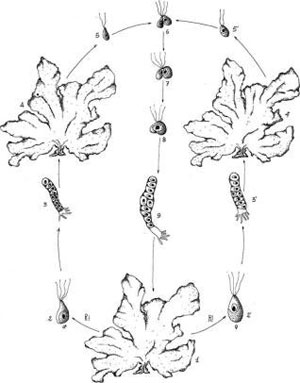
FIGURE 1.22 Life cycle of Ulva sp.: 1, sporophyte; 2, male zoospore; 2', female zoospore; 3, young male gametophyte; 3', young female gametophyte; 4, male gametophyte; 4', female gametophyte; 5, male gamete; 5', female gamete; 6–8, syngamy; 9, young sporophyte. R!, meiosis.
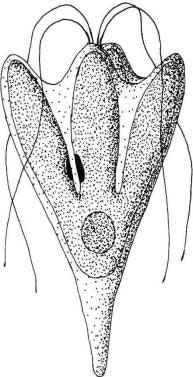
FIGURE 1.41 Unicell of Pyramimonas longicauda
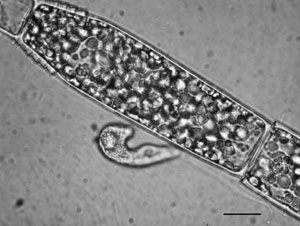
FIGURE 1.42 Filament of Oedogonium sp., with a Peranema sp. cell. (Bar: 20 mm.)

FIGURE 1.43 Thallus of Codium sp. (Bar: 2 cm.)

FIGURE 1.44 Thallus of Trentepohlia arborum.
Klebsormidiophyceae have coccoid and branched or unbranched filamentous forms
(Figure 1.45). Charophyceae have macroscopic thalli, which exhibit the characteristic of both the
filamentous and syphonous levels of organization (Figure 1.46). Dasycladophyceae have syphonous
thalli in many species encrusted with calcium carbonate (Figure 1.47). Chlorophytes show
a wide diversity in the number and arrangements of flagella associated with individual cells (one
or up to eight in the apical or subapical region). Flagellated cells are isokont, which means the flagella
are similar in structure, but could differ in length. These algae are ubiquitous in freshwater,
marine, and terrestrial habitats. Chlorophyta possess chlorophylls
a and
b, β- and γ-carotene,
and several xanthophylls as accessory pigments. Chloroplasts are surrounded by a two-membrane
envelope without any endoplasmic reticulum membrane. Within the chloroplasts, thylakoids are stacked to form grana.

FIGURE 1.45 Filament of Klebsormidium sp.
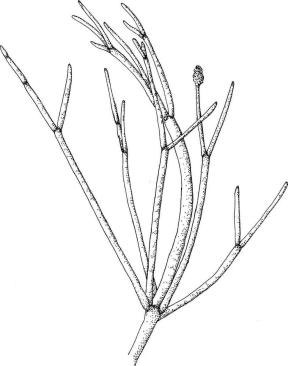
FIGURE 1.46 Thallus of Nitella sp.
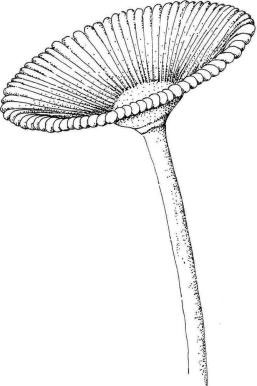
FIGURE 1.47 Portion of the thallus of Acetabularia sp.
Pyrenoids, if present, are embedded within the chloroplast and often penetrated
by thylakoids. The circular molecules of chloroplast DNA are concentrated in numerous
small blobs (1–2 µm in diameter). The most important reserve polysaccharide is starch, which
occurs as a grain inside the chloroplasts; glucan is present in the cell wall of Cladophorophyceae
and Bryopsidophyceae and β-1,4 mannan in Dasycladophyceae. Eyespot, if present, is located
inside the chloroplast, and consists of a layer of carotenoid-containing lipid droplets between the
chloroplast envelope and the outermost thylakoids. Chlorophyta are photoautotropic but can be
also heterotropic. No sexuality is known in Prasinophyceae but the genus Nephroselmis has a haplontic
life cycle. In Chlorophyceae, reproduction is usually brought about through the formation of
flagellate reproductive cells. The life cycle is haplontic. In Ulvophyceae the life cycle is haplontic,
isomorphic, and diplohaplontic. In Cladophorophyceae and Trentepohliophyceae, the life cycle of
reproductive species are diplohaplontic and isomomorphic. In Bryopsidophyceae, Klebsormidiophyceae,
Charophyceae, Zygnematophyceae, and Dasycladophyceae life cycle is haplontic. As
the advanced land plants and the “modest” Trentepohliophyceae class possess the same mechanism
of cell division, that is, using the phragmoplast disc where the cells will divide, plant evolution
researchers believe that the land plants derived directly from this fresh-water algae class.